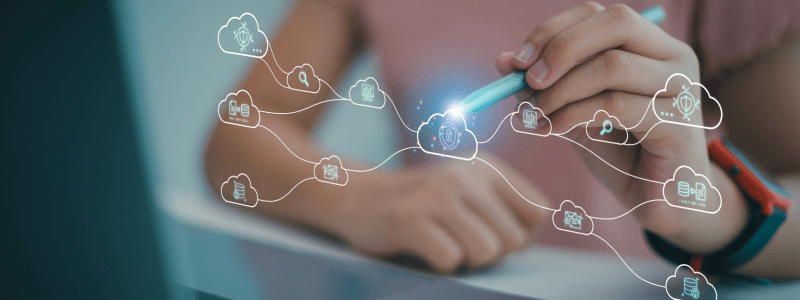
In today’s fast-paced digital world, keeping your application running smoothly is more important than ever. With users expecting seamless experiences and businesses relying on tech for their operations, application monitoring isn’t just a luxury—it’s a necessity. But why exactly is it so crucial? Let’s dive into the top five reasons why monitoring your application is important.
Understanding Application Monitoring
What is Application Monitoring?
Application monitoring is like having a health checkup for your software. It’s a process that continuously tracks the performance, availability, and overall health of your application. Think of it as your app’s personal doctor, always on call to ensure everything is functioning as it should.
Key Components of Application Monitoring
Application monitoring involves several key components:
- Performance Monitoring: Keeping an eye on how fast and efficiently your app runs.
- Error Tracking: Spotting and logging any issues or bugs.
- User Monitoring: Understanding how users interact with your app.
- Security Monitoring: Watching for any potential security threats or breaches.
Reason 1: Enhancing User Experience
Importance of User Satisfaction
User satisfaction is the lifeblood of any successful application. If users are happy, they’ll keep coming back and even bring their friends along. Monitoring helps you keep them happy by ensuring your app is always performing at its best.
Role of Monitoring in Detecting Issues
By constantly monitoring your app, you can detect issues before your users do. Whether it’s a slow-loading page or a glitch in a feature, monitoring tools alert you to problems so you can fix them promptly.
Real-World Examples
Consider a popular e-commerce app. If users experience delays during checkout, they’re likely to abandon their carts. By monitoring the app, developers can quickly identify and resolve the issue, keeping the checkout process smooth and users satisfied.
Reason 2: Boosting Performance
Performance Metrics to Track
Performance metrics are crucial for understanding how well your app is doing. These include:
- Response Time: How quickly your app responds to user actions.
- Throughput: The amount of data your app can handle at once.
- Error Rate: The frequency of errors occurring within your app.
How Monitoring Improves App Speed
Monitoring helps you identify bottlenecks and areas where your app can be optimized. By addressing these issues, you can significantly boost your app’s speed and efficiency.
Case Studies
Take a social media platform that experienced slow load times during peak hours. By implementing robust monitoring, they identified and resolved server issues, resulting in faster load times and happier users.
Reason 3: Ensuring Security
Monitoring for Security Breaches
Security is a top priority for any application. Monitoring helps you stay ahead of potential threats by continuously scanning for vulnerabilities and unusual activities.
Common Vulnerabilities and Threats
Applications can be vulnerable to various threats, including:
- SQL Injection: Malicious code injected into SQL queries.
- Cross-Site Scripting (XSS): Attackers inject malicious scripts into web pages.
- DDoS Attacks: Overwhelming your server with traffic to cause downtime.
Examples of Security Failures and Their Impact
Consider a high-profile data breach where sensitive user information was compromised. Effective monitoring could have detected unusual access patterns and prevented the breach, saving the company from significant financial and reputational damage.
Reason 4: Reducing Downtime
Financial Impact of Downtime
Downtime can be incredibly costly. It not only affects your revenue but also damages your reputation. Users expect 24/7 availability, and any downtime can lead to lost customers and revenue.
How Monitoring Can Prevent Outages
By monitoring your application, you can identify potential issues before they cause outages. Proactive monitoring allows you to address problems quickly, minimizing downtime and keeping your app running smoothly.
Tools for Uptime Monitoring
There are several tools available for uptime monitoring, including:
- Pingdom: Monitors uptime and performance.
- New Relic: Provides real-time monitoring and analytics.
- UptimeRobot: Tracks uptime and downtime and sends alerts.
Reason 5: Facilitating Growth and Scalability
Preparing for Increased Traffic
As your app grows, it’s essential to be prepared for increased traffic. Monitoring helps you understand your app’s capacity and ensures it can handle more users without slowing down.
Scaling Applications Efficiently
Effective monitoring allows you to scale your application efficiently. By identifying resource usage and performance trends, you can make informed decisions about when and how to scale.
Success Stories of Scalable Apps
Consider a streaming service that saw a massive increase in users. Through diligent monitoring, they scaled their infrastructure smoothly, maintaining excellent performance and user satisfaction.
Key Metrics to Monitor
Performance Metrics
- Response Time
- Throughput
- Error Rate
Security Metrics
- Vulnerability Scans
- Intrusion Detection
- Access Logs
User Experience Metrics
- User Engagement
- Session Duration
- Bounce Rate
Tools for Application Monitoring
Popular Monitoring Tools
- Datadog: Comprehensive monitoring and analytics.
- AppDynamics: Focuses on application performance management.
- Prometheus: Open-source monitoring for reliability and scalability.
Pros and Cons of Each Tool
- Datadog:
Pros: User-friendly, extensive integrations.
Cons: Can be pricey for smaller teams.
- AppDynamics:
Pros: Excellent for performance monitoring.
Cons: Complex setup process.
- Prometheus:
Pros: Highly customizable, free.
Cons: Steeper learning curve.
How to Choose the Right Tool
Choosing the right tool depends on your specific needs. Consider factors like budget, ease of use, and the specific features you require. It’s often helpful to try a few tools before making a final decision.
Implementing a Monitoring Strategy
Steps to Set Up Monitoring
- Identify Key Metrics: Determine what you need to monitor.
- Choose the Right Tools: Select tools that meet your needs.
- Set Up Alerts: Configure alerts for critical issues.
- Regularly Review Data: Continuously analyze monitoring data to identify trends and issues.
Best Practices for Effective Monitoring
- Regularly Update Your Tools: Ensure your monitoring tools are always up to date.
- Automate Where Possible: Use automation to reduce manual effort and increase efficiency.
- Involve Your Team: Make sure your entire team understands the importance of monitoring and how to use the tools effectively.
Continuous Improvement and Iteration
Monitoring is not a one-time task. Continuously improve your monitoring strategy by reviewing performance data and making necessary adjustments. This iterative approach ensures your application remains in top shape.
Challenges in Application Monitoring
Common Obstacles
- Complexity: Monitoring large and complex applications can be challenging.
- Data Overload: Too much data can be overwhelming and hard to analyze.
- False Positives: Alerts for non-issues can lead to alert fatigue.
How to Overcome These Challenges
- Simplify Your Approach: Focus on the key metrics that matter most.
- Use AI and Machine Learning: Leverage advanced technologies to filter and analyze data.
- Regular Training: Keep your team well-trained on how to interpret and respond to monitoring data.
Case Studies of Overcoming Monitoring Challenges
A fintech company faced data overload with its monitoring setup. By simplifying their approach and using machine learning to filter data, they significantly improved their monitoring efficiency and reduced false positives.
Future of Application Monitoring

Emerging Trends
- AI and Machine Learning: Advanced algorithms for predictive monitoring.
- Observability: Beyond monitoring, understanding the internal state of systems.
- Serverless Monitoring: New approaches for monitoring serverless architectures.
The Role of AI and Machine Learning
AI and machine learning are revolutionizing application monitoring. These technologies can predict issues before they occur and provide deeper insights into application performance.
Predictions for the Future
The future of application monitoring is bright, with advancements in AI, machine learning, and observability leading the way. These innovations will make monitoring more efficient, accurate, and proactive.
Conclusion
In a nutshell, monitoring your application is vital for enhancing user experience, boosting performance, ensuring security, reducing downtime, and facilitating growth. By staying on top of your app’s health, you can provide a seamless experience for your users and keep your business running smoothly. So, don’t wait—start monitoring today and reap the benefits.
FAQs
1. What is application monitoring?
Application monitoring involves tracking the performance, availability, and overall health of your application to ensure it runs smoothly.
2. How does monitoring improve performance?
Monitoring helps identify and resolve performance bottlenecks, leading to faster and more efficient applications.
3. What tools are best for monitoring applications?
Popular tools include Datadog, AppDynamics, and Prometheus, each with its own strengths and weaknesses.
4. How can monitoring prevent security breaches?
By continuously scanning for vulnerabilities and unusual activities, monitoring helps you stay ahead of potential security threats.
5. What are the key metrics to track in application monitoring?
Key metrics include performance metrics (response time, throughput, error rate), security metrics (vulnerability scans, intrusion detection), and user experience metrics (user engagement, session duration, bounce rate).
Interested in enhancing your network security? Learn more about NETWORK SECURITY MONITORING: PROTECT YOUR DATA to safeguard your applications effectively.
